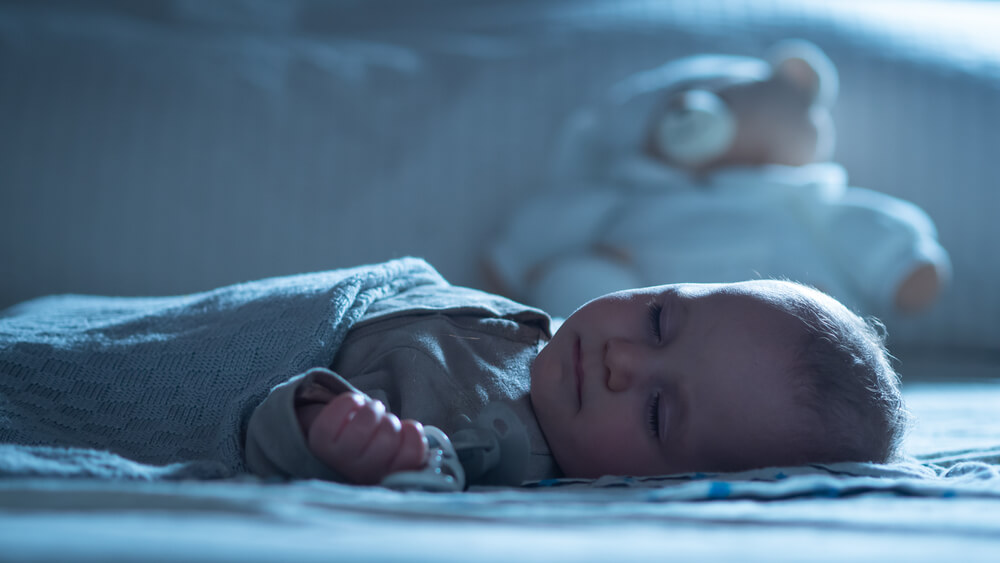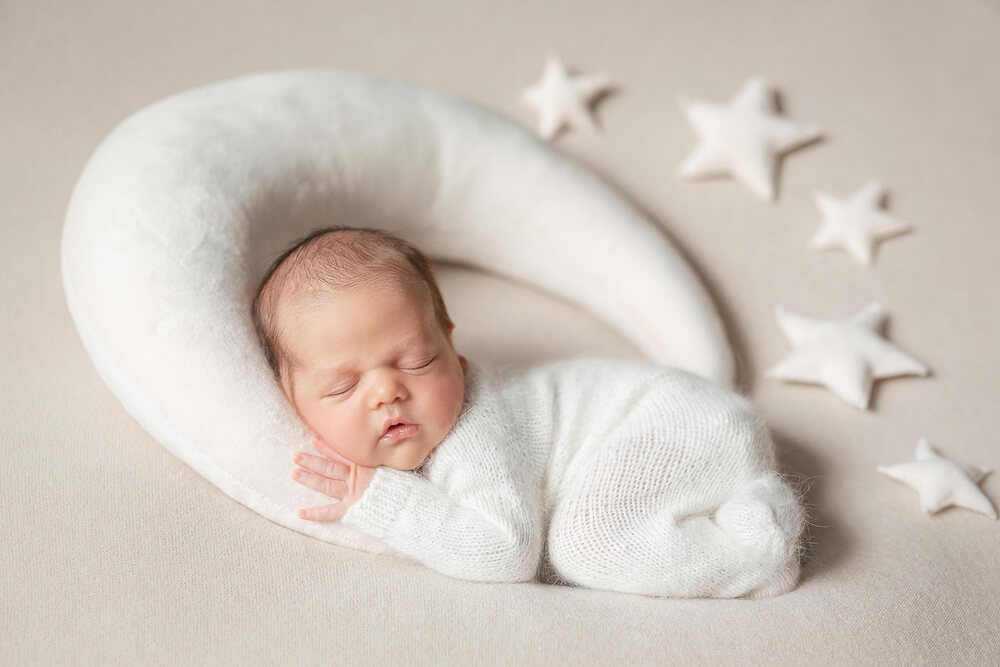If this is your first time being a parent (or maybe you’re a seasoned parent looking for some hot tips), you’re likely wondering, “how should a newborn sleep?”. Fortunately, this comprehensive article on how to change a baby’s sleeping positions and risks by age will teach you just that and more. In this guide, you’ll learn how to change the child’s sleeping positions, whether it is safe for a newborn to be sleeping on the side, how to dress a baby for sleep, and if sharing a bed with your child is healthy.
Before proceeding with the guide and applying the tips outlined below, make sure to consult a reliable pediatric care specialist first. This way, you will receive the best custom-tailored information and guidance.
With that out of the way, let’s see the answer to the burning question “how should a newborn sleep?”. Keep on scrolling.
How Should a Newborn Sleep: Risks by Age
In a nutshell, a newborn should always sleep on their back. If it rests on its side or front, the baby may be in danger. According to the American Academy of Pediatrics, if your newborn is sleeping on its side, there is a high risk that it will fall onto its stomach. Why is this problematic?
Imagine this. The newborn is sleeping on its side and suddenly falls onto its belly. Since the newborn can’t yet support its head, its face can get stuck against the mattress, making breathing difficult (or preventing breathing).
So, if the newborn is sleeping on its side, there is a risk of suffocation.
Typically, babies can support and lift their heads when they turn four months. If your baby is between three and four months of age and is rolling over on its own, there is usually no need to move them back on their backs. In summary, a baby who can switch positions can turn around on their back.
Of course, we recommend keeping the baby supervised. We suggest talking to a specialist like Ana Hernandez Puga, MD, for additional help or guidance. Always stay safe.
Overall, the best sleeping position for a newborn is on their back. Evidence reveals that putting your baby to sleep on their back reduces the risk of SIDS or sudden infant death syndrome.

What’s the Best Way to Change the Baby’s Sleeping Position?
Some babies prefer to sleep on their sides or their stomach. However, as mentioned, this can lead to unsafe situations.
The simplest, fool-proof way to change your baby’s sleeping position is to put it to sleep on its back. But, of course, there is a possibility that the baby will find it challenging to adapt to this position. An excellent way to ease the baby into the new position is to nurse them to sleep before bed. Try gently rubbing the belly, talk to them gently, sing them a lullaby, or rock them to sleep.
Caution: Some parents may be tempted to use special devices that hold the child in position to prevent rolling. However, these infant sleep positioners boost the chances of sudden infant death syndrome because the baby might suffocate against the mechanism. Moreover, by restraining the movement of the baby, the device may prevent them from rolling back to a safe position.
How Should a Newborn Sleep: Safety Tips
Parents may make a few critical mistakes when putting a baby to sleep. Firstly, parents may think that sharing a bed is a way to bond with the baby. However, sharing a bed can be dangerous because it increases the risk of sudden infant syndrome (SIDS) or other sleep-related deaths.
Although sharing a bed is frowned upon, sharing a room is not. In fact, room-sharing is an excellent way to monitor the baby, comfort it, and feed it whenever they are hungry. In essence, room sharing is when the parents place the crib (portable and non-portable), bassinet, or play yard into their bedroom. Overall, the American Academy of Pediatrics advises parents to room-share without bed-sharing.
Here are some more tips on how to create a safe sleep environment for your baby:
- Always put your newborn to sleep on their back.
- Do not put anything in the bassinet or crib (keep pillows, toys, quilts, unfitted sheets, and blankets out of this area).
- Always use a firm mattress and cover it with a sheet (snug fit).
- Keep the baby away from people who smoke, as secondhand smoke boosts SIDS risk.
- Share a room with the newborn.
- Refrain from using weighted blankets.
- Try a swaddle.
- Dress the baby to room temperature (don’t keep them too hot or cold).

While reading these tips, you may be wondering, “how to dress the baby for sleep?”. We’ve got you covered. Here are some tips on how to dress the baby for sleep to prevent overheating or coldness.
There are a few basic rules on how to dress a baby for sleep. Some sources note that you should put the baby in one extra layer of clothing since babies shouldn’t sleep with blankets or loose sheets. Although this is correct, you should always make sure that the baby’s sleeping environment is appropriate for the “extra” bundles of clothes. The perfect room temperature is between 68° and 72°F, so if your home tends to be warmer or cooler, you will have to make adjustments by removing or adding layers.
Overall, it is always better to have your child slightly underdressed. However, if you heavily overdress the child, you may put them at risk of SIDS. Although this risk factor mainly applies to babies up to six months of age, it can also affect toddlers.
An excellent way to check your home’s temperature is to get an indoor thermometer or a home thermostat. Also, with time and more parenting experience, you will learn how to trust your gut. If you feel snug in your comfy cotton pajamas, chances are the baby does too.
Here are some quick tips on how to dress the baby:
- Keep it light during summer nights by choosing a short-sleeve bodysuit (organic cotton is best), a cotton swaddle, a T-shirt with a muslin.
- Be prepared for chilly winter nights by dressing the baby in heavier microfleece swaddle or fleece pajamas (of course, if your home is warm during winter, you might not need these layers).
- Avoid accessories and loose articles such as hats.
- Always choose a snug fit.
- Prioritize functionality over trendiness.
You’ll also want to ensure your baby is feeling comfortable. However, since babies don’t talk, they can’t communicate their feelings to you. One way to determine your baby’s comfort levels is to check for overheating signs such as red cheeks, perspiration, rashes, and quickened breathing. Another simple way to check for overheating is to feel the baby’s skin on their chest, belly, or neck. If the skin feels sweaty and hot, you will want to act immediately to cool them down.
Book an Appointment Today
Life with a baby, especially can be challenging. We get it. If you’re looking for some of the best-trained experts to help you in healthy parenting, give us a call today. We guarantee only the best results.




